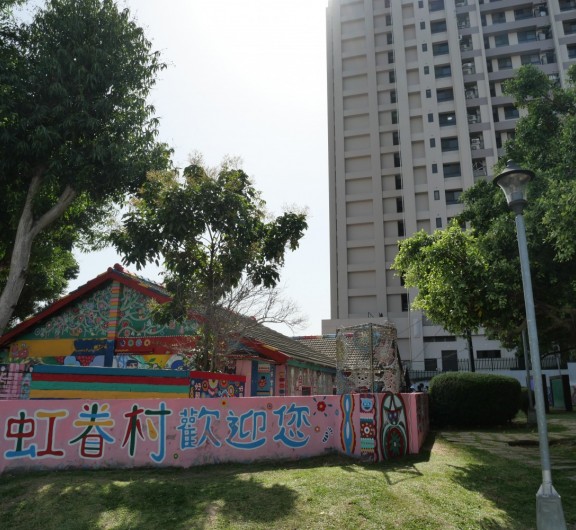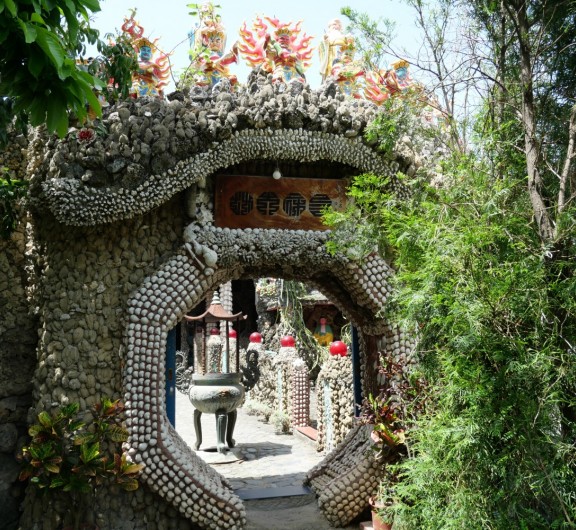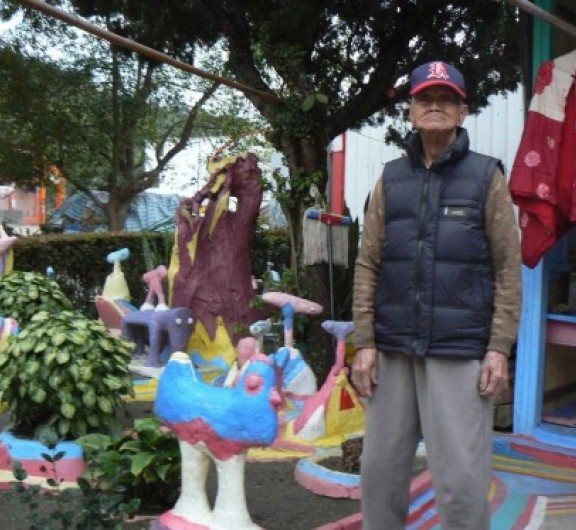The Garden on the Mountain of the BuffalosWu Tianlai and Wu Zhixiong
About the Artist/Site
South of the village of Taidong on the Pacific coast of Taiwan is an area that, until the forced cultural homogenization resulting from the Japanese colonization of the island (from the end of the 19th century to the end of World War II), was inhabited by aboriginal people known as the Amis. Although significant numbers of Amis left their homeland in order to look for work (primarily in road construction), many retained their attachment to the land of their ancestors, and returned there in their retirement. This was the case of Wu Tianlai, who left in order to earn his living as a gardener on the golf courses of Taiwan and then, later, Japan, before returning home.
Imprinted with the traditional Amis culture, which is very respectful of the earth—in the symbolic community sense of the term, rather than the more contemporary meaning—Wu inherited some land near the sea known as Niu Shan, the Mountain of the Buffalos. Around twenty years ago, he decided to embellish his property by adding several pieces of driftwood that he had found on the nearby beaches. At first, he was content to choose them by their suggestive forms, and place them on his land without any further artistic interventions on his part. But soon, he began to transform them slightly, adding elements of paint or cutting them in order to accentuate the forms that he wanted to make more apparent.
Gifted with a certain taste in his materials and a sense of humor that was somewhat provocative even in his retirement, he decided to diversify his creative activities. Renewing the totemic tradition of his ancestors, he created several very large sculptures. But in returning to the tradition, he actually appeared to transgress it, because many of his wooden sculptures have rather ribald connotations that are hardly orthodox. Thus, little by little, his garden took on the rather free form of which he’d dreamed during his working life. In order to enhance and complement his wooden bestiary, he also started to work in cement, in order to realize pieces on a larger scale.
Faithful to his philosophy, he made sure that his son, Wu Zhixiong, became aware of the necessity of respecting the site, and he transferred the property to him in order to let him live there and open a café and a small hotel in order to serve passing tourists. For many years, now, the father and son have worked together to conserve, maintain, and continue to embellish the garden. For example, a year ago some of the wooden sculptures were destroyed by a fire caused by an electrical short circuit. Afterwards, the father and son doubled down to create new sculptures, partially using some of the burned remains; they were able to integrate them again into the garden and succeeding in recapturing the original magic of the site. Today, the son has become as creative as his father, so the garden can really be considered a collaborative work.
In this grandiose site, between the mountains and the sea, a magic sense of great serenity emanates from the Garden of the Mountain of the Buffalo. The originality of the site seems to be tied to the fact that it can be linked not only to self-taught creation but also to natural poetry. But given the ethnic origin of its creators, it is equally an interesting example of what one could call a transgressive popular art; that is, a popular art which has been freed from the traditional characteristics that its creators had artistically inherited. Thus the future of the art and the culture of the Amis will certainly pass by the road of the Garden on the Mountain of the Buffalo.
~Remy Ricordeau
Translated by Jo Farb Hernández
Map & Site Information
tw
Latitude/Longitude: 23.8593411 / 121.5598345
Nearby Environments







Post your comment
Comments
No one has commented on this page yet.